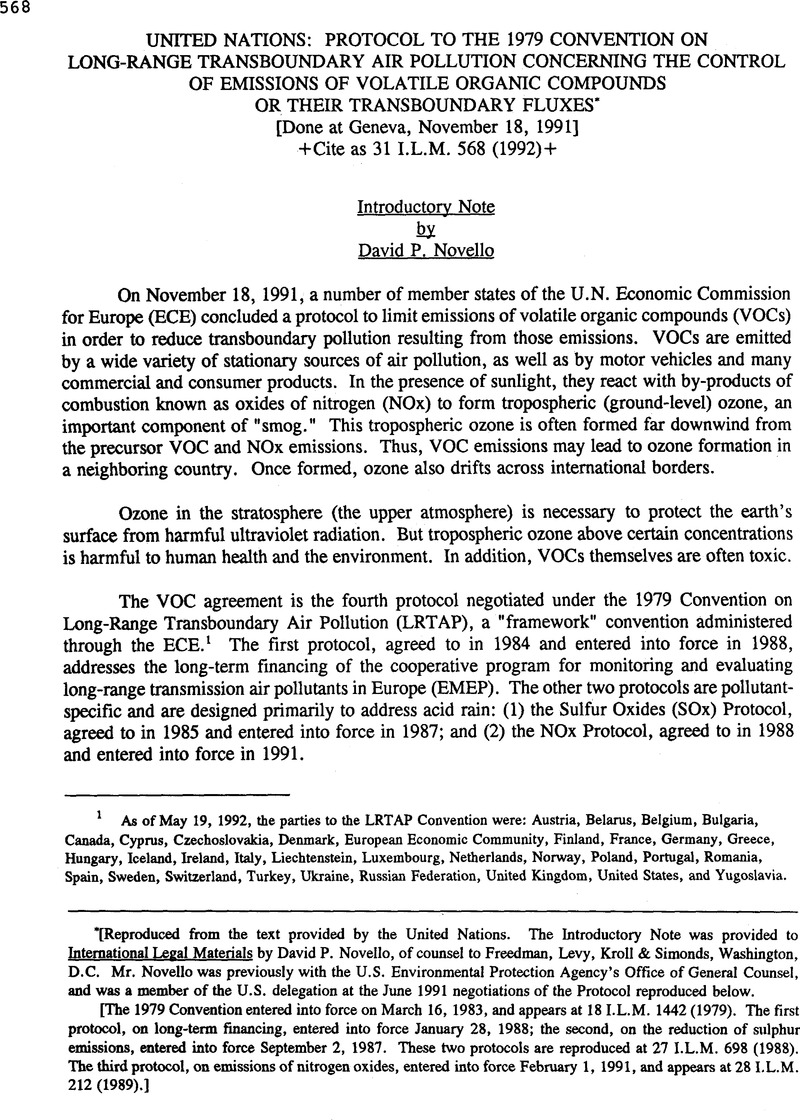Published online by Cambridge University Press: 27 February 2017

* [Reproduced from the text provided by the United Nations. The Introductory Note was provided to International Legal Materials by David P. Novello, of counsel to Freedman, Levy, Kroll & Simonds, Washington, D.C. Mr. Novello was previously with the U.S. Environmental Protection Agency's Office of General Counsel, and was a member of the U.S. delegation at the June 1991 negotiations of the Protocol reproduced below.
[The 1979 Convention entered into force on March 16, 1983, and appears at 18 I.L.M. 1442 (1979). The first protocol, on long-term financing, entered into force January 28, 1988; the second, on the reduction of sulphur emissions, entered into force September 2, 1987. These two protocols are reproduced at 27 I.L.M. 698 (1988). The third protocol, on emissions of nitrogen oxides, entered into force February 1, 1991, and appears at 28 I.L.M. 212 (1989).]
* These processes can be combined with solvent recovery systems. Cost savings then ensue.
** Savings due to energy recovery are not included; these can reduce the costs considerably.
*** With buffering filters to dampen emission peaks, medium Lo high efficiencies are achieved.
* Depending on capacity (station size)/ retrofitting or new service stations.
** Will increase with increasing penetration of standardization of vehicle filling pipes.
* Additional production-cost estimates per vehicle, relative to technology option B.
** Costs for engine modifications from options A to B are estimated at $US 40-100.
*** Under technology options D and E, CO and NOX emissions are also substantially reduced, in addition to VOC reductions. Technology options B and C can also result in some CO and/or NOX control.
* Additional production-cost estimates per vehicle.
** Expected to be available by 1991 for a few specific motor cycle types (prototypes already constructed and tested).
1/ Relative to uncontrolled situation.
2/ Additional production-cost estimates per vehicle.
3/ Reid vapour pressure.
4/ Based on United States data, assuming an RVP limit of 62 kPa during warm season at a cost of $US 0.0038 per litre. Taking account of the fuel economy benefit associated with low RVP petrol, the adjusted cost estimate is $US 0.0012 per litre.
5/ United States Test Procedure in the 1990s will be designed for the more effective control of multiple diurnal emissions, running losses, operation under high ambient temperature, hot-soak conditions following extended operation, and resting losses.